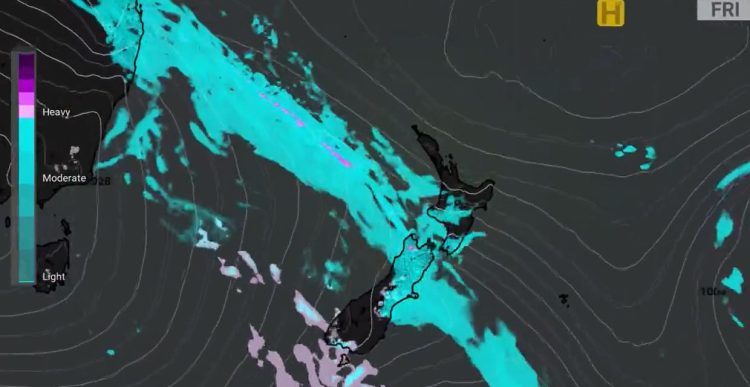Ang linggo ay magsisimula nang mahinahon, ngunit magbabago ito sa lalong madaling panahon. Karamihan sa mga lugar ay masisiyahan sa magandang panahon hanggang Miyerkules Gayunpaman, nagbabala ang MetService tungkol sa mas basa at mas mahangin na kondisyon sa huling bahagi ng linggo, na may mababang antas ng niyebe sa timog.
Noong Linggo, naitala ng MetService ang halos 13,000 sugaw ng kidlat bago ang 6 ng umaga ng Lunes, na may halos 7,300 na nangyayari sa lupa, higit sa lahat sa kanlurang rehiyon.
Noong Lunes ng umaga, ang tanging babala sa panahon ay para sa posibleng niyebe sa Milford Road. Karamihan sa mga lugar ay inaasahang magkakaroon ng magandang araw, na may ilang mga shower posible. Ang kanluran ng South Island ay inaasahang magiging pinakambasa.
Sa Auckland, hinulaang malinis ang mga shower Lunes ng umaga, na ginagawang tuyo ang linggo, maliban sa ulan sa Biyernes. Inaasahang magiging maayos ang Wellington sa Lunes ngunit maaaring makakita ng ilang hapon na shower sa hilagang suburbs. Pangunahing tuyo ang Martes at Miyerkules, ngunit ang Huwebes ay maaaring magdulot ng malakas na hangin at paminsan-minsang ulan.
Maaaring makakuha ng ilang mga shower sa umaga sa Christchurch sa Lunes, na dapat na malinaw. Ang Martes at Miyerkules ay inaasahang magiging maayos, ngunit bababa ang temperatura sa 0°C sa gabi Martes hanggang unang Miyerkules. Malamang na ang mga shower sa huling dalawang araw ng trabaho ng linggo.
Maaaring huhulaan ng Huwebes ang pinakamalaking araw, na hinuhulaan ng MetService ang malakas na hangin sa timog North Island, mabigat na ulan na gumagalaw sa hilaga sa South Island, at niyebe na bumaba sa 400 metro sa Fiordland. Mayroon ding posibilidad na magkaroon ng malakas na ulan sa mga bahagi ng North Island sa Biyernes.





























































